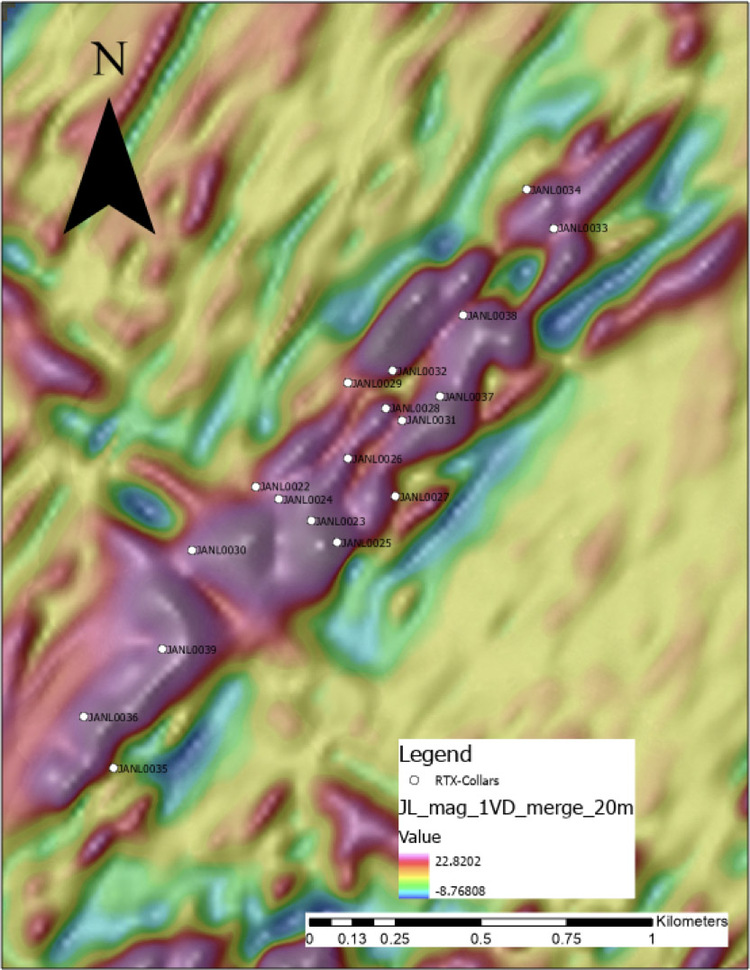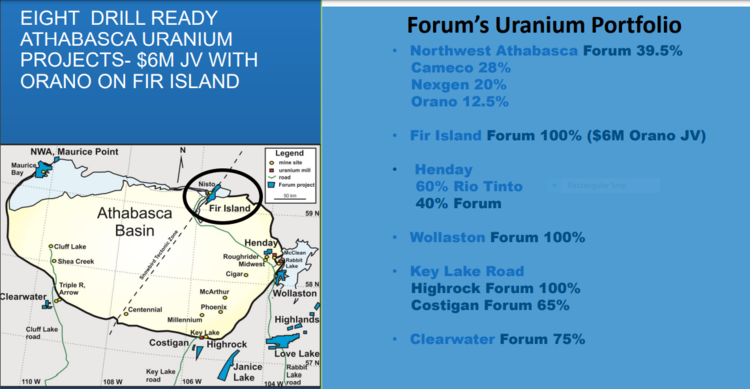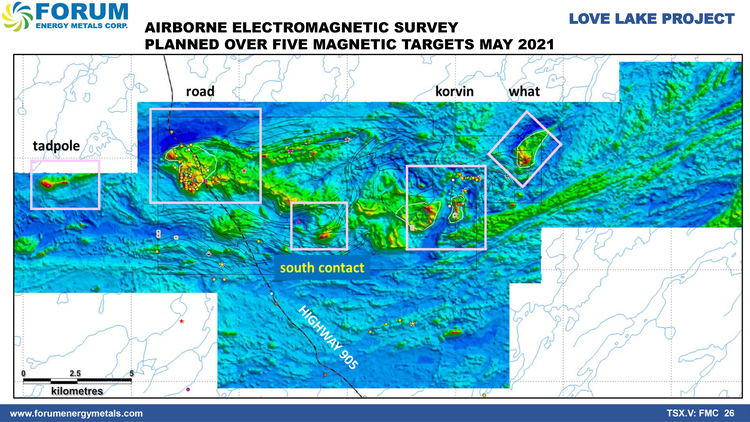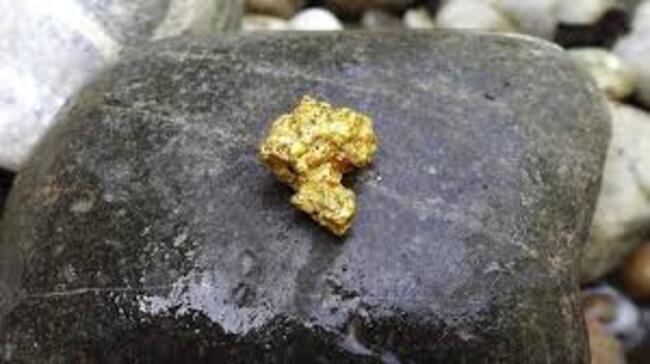On October 12th I introduced Goldseek Resources to readers in a piece titled Goldseek Resources (GSK.C) tags 4.92 g/t gold over 28.65 meters at flagship Beschefer Project along the prolific Detour Gold Trend.
Goldseek Resources (GSK.C) – (GSKKF.OTC) – (4KG.FSE)
- 32.96 million shares outstanding
- $5.27M market cap based on its recent $0.16 close
The above piece offered a detailed look into the Company’s flagship Beschefer Project, a recently acquired 962-acre property located in the Northern Abitibi Greenstone Belt some 14 kilometers east of the past-producing Selbaie Mine, 45 kilometers northeast of the Casa Berardi Mine, and roughly 30 kilometers southwest of Wallbridge’s Fenelon Gold Project.

On October 6th, Goldseek dropped a headline announcing the first assays to flow from a maiden 5,000-meter drill campaign at Beschefer, including a 4.92 g/t gold over 28.65-meter hit along the Central Shallow Zone (see map further down the page).
Since then, the Company announced drill core observations from the remaining holes of this 5k meter campaign.
The October 27th headline…
Goldseek Announces Final Beschefer Drill Observations
Highlights:
- Visual observation on final 2,650 meters of drilling completed across 8 holes;
- The targeted B14 shear zone has been in all holes drilled during this program;
- All samples have been delivered, with results expected to be received in batches over the next month.
Visual Intercept Highlights from Final 8 Holes:
The B14 gold-bearing shear zone is a 9 to 50 meters thick interlayered package of mafic to felsic volcanic affected by a strong ductile deformation zone identified as a mylonite in previous work. The current interpretation indicates a succession of closely stacked lenses following a dip of 30 to 60 degrees to the southeast and extending along strike over nearly 1km.
Two pending holes—BE-21-08 to BE-21-11—were collared along the East Zone, a zone marked by higher (historical) grades. See map below.
Hole BE-21-10 cut 50.3 meters of the gold-bearing structure (true width is estimated between 85% and 100% of the drill core length).
These holes were all drilled on the same section as historical holes attempting to duplicate and extend the influence of historical results such as 10.3 g/t over 11.4m from hole BE12-014. The 2021 drill grid covered 100 meters along dip and this, between a vertical depth of 100 and 250 metres. Observations made so far all indicate a variable thickness of the gold-bearing structure between 9.5 and 50.3 metres. Strong alteration zones characterized by the feldspar-iron carbonate-sericite alteration were intersected in holes BE-12-08 and BE-12-09 with strong pyritization and chalcopyrite occurrences.

Holes BE-21-12, BE-21-13, and BE-21-14 stepped out between 100 and 175 meters northeast and along strike from the known limits of the East Zone.
All three of these holes intersected a large felsic volcanic unit at a vertical depth between 150 to 250 meters.
Hole BE-21-13 cut 30.35 meters of the gold-bearing structure.
Hole BE-21-14 cut 24.55 meters of the gold-bearing structure.
See the drill hole table at the center of this October 27th press release for further drill-core-observation details.
Jon Deluce, Goldseek’s President & CEO:
“We continue to hit the targeted mineralization in all of our final holes including our 175-meter step-out on the East Zone, which is a testament to the continuity of the gold system and near resource potential. All samples have been delivered to the lab, and we expect to receive the remaining results in batches over the next month. With the recent announcement of 4.92 g/t gold over 28.65 meters in BE-21-02, we are moving forward with planning a follow-up drill program for this winter.
Also, we would like to point out the identification of what we think is a felsic volcanic centre representing the hanging wall of the Beschefer gold zone. This, combined with the copper anomaly recently highlighted, could represent another opportunity within the Beschefer gold zone.”
This Q&A with Goldseek’s CEO was conducted on Friday, October 29th. My goal was to gain a few insights into what may come from the remaining holes that were sent off to the lab on a rushed basis.
I was particularly interested in learning more about the East Zone intervals, and the three 100 to 175-meter stepouts. If these stepouts make the grade, Beschefer’s resource potential blows wide open.
Goldseek’s CEO, Jon Deluce…
Highballer: Hello Jon. I appreciate you taking time out of your busy schedule. For those new to the Goldseek story, can you tell us how your recently acquired Beschefer Project ties in with your strategy to create shareholder value?
CEO Deluce: Thanks for the opportunity to speak to your audience. When we went public in March 2020 I promised my shareholders that we would identify and acquire an advanced stage asset (small resource or near resource) which would be our flagship asset at Goldseek. We went public with two grassroots assets and since added more but I believe to be a successful junior mining company and increase your chances of success on the grassroots side you need a strong flagship asset to drive news, development, and financing. This provides some level of de-risking our value proposition and allows us to systemically work through our grassroots side without the pressure to drill.
Highballer: Can you give us a summary of previous exploration efforts carried out on the property?
CEO Deluce: The initial discovery was made in 1996 by Les Mines Selbaie, however, the gold results were of little interest to them as they were looking for base metal feed to keep their Selbaie Polymetallic VMS Base Metal Mine in production, which was 12 km to the west. Since that discovery, the first significant drill program focused on the gold was Lategra in 2012 and 2013, which was taken over by Excellon during this time. They completed 17,000 meters of drilling and discovered 55.63 g/t Au over 5.41 meters in the East Zone. Wallbridge was next to take the project over and completed one small drill program in 2018 before making world-class discoveries at their Fenelon Gold Project, which offered Goldseek the opportunity to option it.
Highballer: What was your objective with this first round of drilling?
CEO Deluce: We accomplished our goals in this first round of drilling which was:
- Infill drilling on the Central Shallow Zone to move the project closer to our targeted 2022 maiden resource.
- Expansion drilling on the East Zone which is the least drilled zone historically and we focused on stepout holes up to 175 meters away. If we are successful with these stepouts, it opens the system up significantly along strike.
Highballer: After this 5,000-meter drill campaign, you released results from the first seven holes, the highlight interval being 4.92 g/t gold over 28.65 meters, including 11.39 g/t gold over 9.1 meters. That’s a solid hit. How do you interpret these early results—how do they impact your current model of the main Central Shallow Zone, and the continuity of mineralization along the B-14 structure as a whole?
CEO Deluce: We are very excited about this 4.92 g/t gold over 28.65 meters hit as it helps increase the grade and tonnage in our block model of our Central Shallow Zone. It also shows there is significant expansion opportunity amongst this gold system, with this being the second-best intercept by metal factor on the project to date. My technical team feels they can better target these higher-grade shoots as we prepare for our next drill program targeted for January 2022.
Highballer: The East Zone—a zone that has seen limited drilling but has historically delivered high-grade results like 53 g/t Au over 5.6 meters—was tested during this recent campaign with five holes. Three of these holes represent fairly substantial stepouts of up to 175 meters. You obviously stepped out in this direction for good reason?
CEO Deluce: Yes, after building the 3D model, reviewing the historical core and geophysics we feel the East Zone continues to the North-East, and the limit has yet to be determined. We also feel there is the potential to discover new parallel zones during these and future step-out holes. As you know, the Abitibi gold systems with this continuity and grade can be very large, so we believe we are just scratching the surface of the potential at Beschefer.
Highballer: I know it’s still early in the going, but how do you think these early results will impact a future resource calculation?
CEO Deluce: We believe these initial results help increase the potential grade and tonnage of the Central Shallow Zone. Prior to the 4.92g/t Au over 28.65-meter intercept, the typical grade of Central Shallow was 2.5g/t Au over 12 meters so this is a great improvement and will help lift the block model.
Highballer: On October 27th, you reported visual observations re the final 8 holes drilled during this Phase-1 campaign, noting that the targeted B14 shear zone was intersected in all holes. It sounds like you and your team like the core. Can you elaborate on what you are seeing in these final intervals of core?
CEO Deluce: We were excited to get these visuals out there and the significance of hitting the B14 mylonite shear zone in our step-out holes on the East Zone up to 175 meters from prior intercepts. The widths of the zone in these stepout holes ranged from 17.5 to 30.35 which is very positive and supports the zone continuing even further to the northeast which we will focus on targeting in our January 2022 follow-up drill program. We will receive our rushed assays on this zone in November and will report results by the end of the month.
Highballer: The three big stepouts from the East Zone are of particular interest. What is it about the core from these holes that stands out (I see you have elevated concentrations of pyrite in these final three)?
CEO Deluce: The first important factor to start was we continued to hit the zone which prior operators did not test. Secondly, the levels of pyrite including the following comment from BE-21-14 “Over 10% fine grain pyrite over metric intervals, otherwise fine pyritization throughout the entire unit” is a similar context to where we saw 10+ g/t Au samples in BE-21-02. Nothing is guaranteed and the final results will be the deciding factor but we are encouraged from what we have seen and released.
Highballer: What are your expectations as the drill is pushed further east?
CEO Deluce: Our expectations and our goal is to continue expanding the East zone to the northeast. We have noticed more Chalcopyrite in the East Zone and combined with geophysics we believe this area has base metals potential in addition to the strong gold system we are developing.
Highballer: And the potential Felsic Volcanic center you’ve encountered in the East Zone?
CEO Deluce: We believe the Felsic Volcanic center is unique to the East Zone and offers a new opportunity to explore for base metals in addition to gold.
Highballer: Again, I understand that these are early days for the project, but what kind of (potential) development scenario do you envision at Beschefer—open pit or underground?
CEO Deluce: Given the lower grade envelope starting at surface, we believe this project has the potential for both open pit and underground. We are in the early days and we will continue to develop our thesis on supporting which method or methods would be most economic and best highlight the Project’s potential.
Highballer: Can you briefly summarize your Southern Arm project, and how it might tie in with your exploration efforts at Beschefer?
CEO Deluce: Southern Arm is our grassroots project attached to Beschefer to the North-East. We believe this project has a lot of potential for discovery looking at the geophysical targets and strong gold geochemical responses from the limited historical till drilling. Next week we will be at Southern Arm to complete prospecting, some till drilling while taking 5 meters of outcrop samples at the same time. We believe the Detour Gold Trend is very underexplored so this neighboring Project is a great fit to explore alongside Beschefer.
Highballer: If the remaining results from this 5,000-meter campaign meet your expectations, what kind of a Phase-2 program are we looking at?
CEO Deluce: We are currently planning a follow-up 5,000-meter drill program to start at the end of January. Pending results from the East Zone holes this program will focus on further step-out and infill drilling within the East Zone. We will also be targeting some holes to expand the strike of the Central Shallow Zone to the east. We will announce our full drill plan in early December and has the potential to be larger than 5,000 meters.
Highballer: Ultimately, what are your expectations for Beschefer—do you see multi-million-ounce potential here?
CEO Deluce: We do see multimillion ounce potential at Beschefer. It is rare to find this type of grade and continuity on the Abitibi Greenstone Belt in Quebec outside of the Majors or Large Junior Explorers. That is why we are so excited about what we are developing with Goldseek and the value proposition we offer while we look to resume the Gold Bull market after this long consolidation period.
If any of your audience has any specific questions, I welcome them to contact me at jdeluce@goldseekresources.com or happy to schedule an intro zoom call to provide further details.
Highballer: Solid info. Always a pleasure. Thanks Jon.
Quoting my October 12th article linked at the top of the page (again)…
CEO Deluce sees Goldseek in a similar position to that of its neighbor, Wallbridge Mining, early in the going. Wallbridge attained a market cap of $440-plus million on the strength of its 100%‒owned Fenelon Gold Project next door. The Company is scheduled to complete a highly anticipated (maiden) resource estimate this month. Expectations surrounding this impending ounce count are high.
With M&A likely to heat up in the region, Wallbridge could see a takeover bid from this recent “Merger of Equals” between Agnico Eagle and Kirkland Lake—an event that would cast a spotlight on the likes of Goldseek (all speculation on my part, of course).
Despite the recent chop in the gold market—$1,800 is turning into a present-day Maginot Line of sorts—these are exciting times to be a speculator in this high-risk/high-reward arena.
Forum Energy Metals (FMC.V) – (FDCFF.OTC)
- 166.19 million shares outstanding
- $54.84M market cap based on its recent $0.33 close
On October 28th, Forum released the first set of drill results from a summer drill campaign at its flagship Janice Lake Cu-Ag Project where mining colossus Rio Tinto Exploration Canada (RTEC) can earn up to 80% in the project by spending $30M.
This is RTEC’s third campaign with the drill bit at Janice Lake. This last round was focused on the 2.8 km long Rafuse Target, one four targets drilled on the property to date.
Rafuse saw nine holes drilled this past summer for a total of 2,547 meters. The values summarized below represent the first four holes from this summer-of-21 campaign.
- JANL0031 – 0.12% copper and 1.36 g/t silver over 2 metres from 10.1 to 12.1m;
- JANL0032 – 0.59% Cu and 4 g/t Ag over 14 meters from 265m to 279m, including 1.21% Cu and 7.6 g/t Ag over 6m from 273m to 279m;
- JANL0033 – 0.29% copper and 3 g/t silver over 6.8 meters from 42.2m to 49m;
- JANL0034 – 0.14% copper and 2.1 g/t silver over 18.8 meters from 74.9m to 93.7m.
Assays are pending for an additional five holes.
Holes JANL0031 and 0032 were drilled to determine the orientation of the structurally controlled mineralization intersected in drill hole JANL0028 – 0.89% copper and 8.02 g/t silver over 14 meters from 246 to 260 meters (including 6 meters of 1.67% copper and 13.6 g/t silver from 254.1 to 260.1 meters). JANL0028 was reported in a June 9, 2021 press release.

Hole JANL0028 drilled in the winter program intersected 0.89% copper and 8.02 g/t silver over 14 metres from 246m to 260m, including 6m of 1.67% copper and 13.6 g/t silver from 254.1 to 260.1m (see Rio Tinto intersects 14 meters of 0.89% copper and 8 g/t silver including 6 meters of 1.67% copper and 13 g/t silver at Forum’s Janice Lake Copper/Silver Project, Saskatchewan news release dated June 9, 2021). Hole JANL0037 was later drilled to determine the orientation of the mineralized fault intersected in holes JANL0028 and 0032. Assays are pending. Results of the regional prospecting and mapping campaign this summer over the 52 km extent of the Janice Lake Copperbelt and from drill holes JANL0035 to 0039 are expected in November.
Though these results aren’t the home runs many were hoping for, and this most recent drill campaign represents a third pass, Janice Lake is a massive property. RTEC has barely scratched the surface here (the Rafuse Target alone is some 2.8 kilometers long).
While RTEC was drilling this past summer, they also had field crews aggressively prospecting and mapping the 52-kilometer extent of the project to get a better handle on the surface geology.
The stock took a hit on Friday. If you peruse the FMC channel on ceo.ca, there’s some discussion about a uranium-focused newsletter having issued a (partial) sell recommendation after the Janice Lake results were released.
The fact is, Forum has multiple irons in the fire.

Aside from an extensive portfolio of drill-ready uranium projects in and around the prolific Athabasca Basin, we’re expecting drill hole assays from the Company’s wholly-owned Love Lake Nickel-Copper-PGM Project located along Highway 905, roughly 60 kilometers northeast of its flagship property.

Concerning Love Lake, I summarized (recent) activity at the project in a September 22nd report:
Forum is on its eleventh and final hole of the drill program (Korvin Creek target).
The following is a summary of the targets drilled to date:
Korvin Lake Target – two holes drilled on the electromagnetic target identified by the HeliSAM Time Domain Electromagnetic (EM) airborne survey completed in May 2021.
What Lake Target – five holes have been drilled on trenches which returned (historical) values as high as 0.43% Copper, 0.23% Nickel, 4275 ppb Palladium, 3580 ppb Platinum and 200 ppb Gold and on targets outlined by ground magnetic and electromagnetic surveys.
Korvin Creek Target – four holes will be completed where two drill holes in 1968 intersected 31.7 metres grading 0.23% copper and 36.6 metres of 0.29% copper, as well as targets outlined by ground magnetic and electromagnetic surveys.
We should see Love Lake drill hole assays later this month.
The Company also has a promising cobalt project—the recently acquired Quartz Gulch Cobalt-Copper Project in mining-friendly Idaho—where are large volume of grab and soil samples from a summer field campaign are due back from the lab in late November.
A heads up: Forum’s VP of Exploration, Ken Wheatley, will be doing a Uranium short course on a StockBox podcast on November 8th. Forum’s CEO, Rick Mazur, will be presenting at the Swiss Mining Institute beginning Nov 2nd. He will also be presenting at the Metals Investor Forum on November 13th (during John Kaiser’s session).
It’s important to note that Forum is cashed-up with $5.5M in its coffers.
END
—Greg Nolan
Full disclosure: Both Goldseek and Forum are Highballer clients. I am obviously biased in my views so do your own due diligence, and consult a registered investment advisor, before making any investment decisions in this high-risk/high-reward arena.
